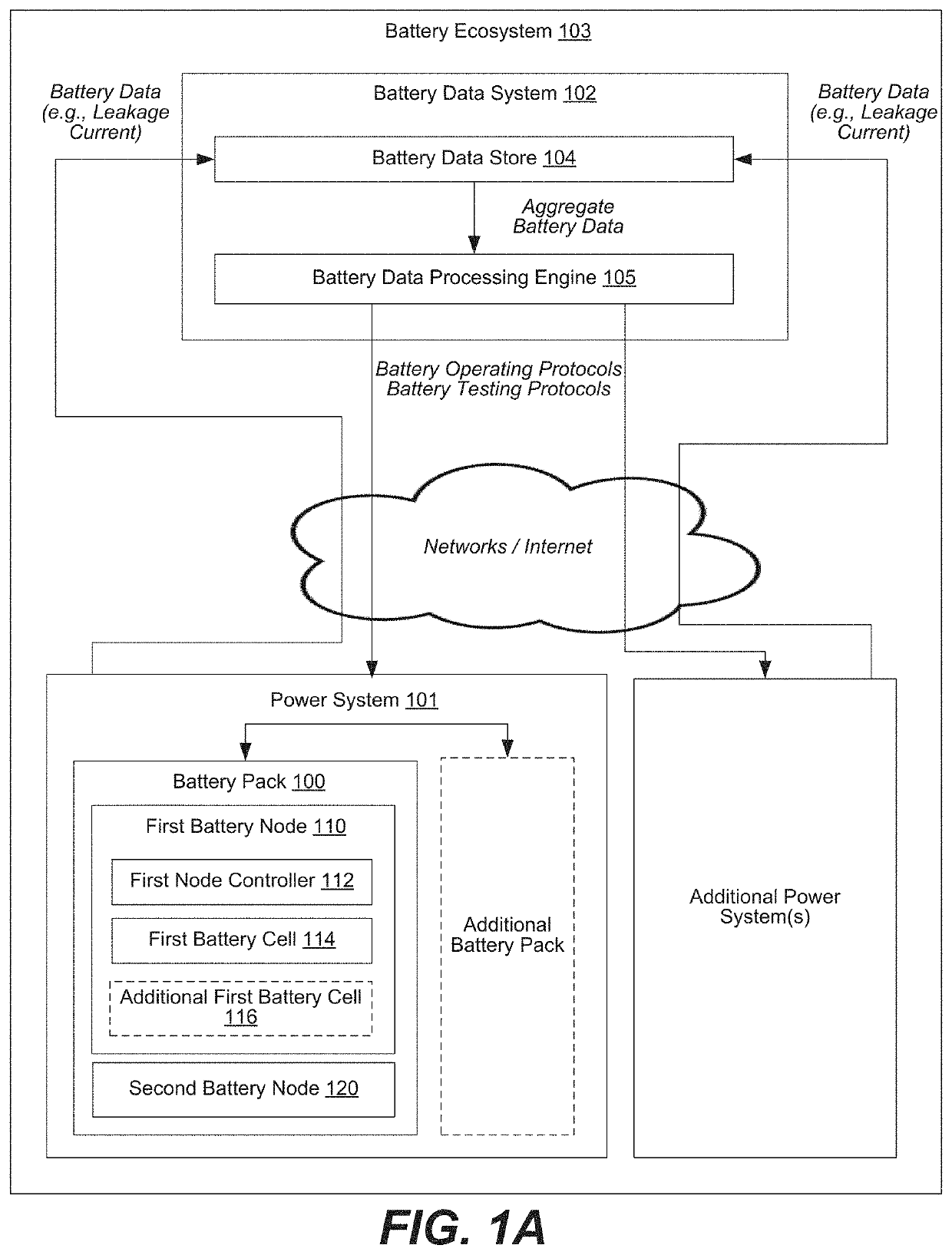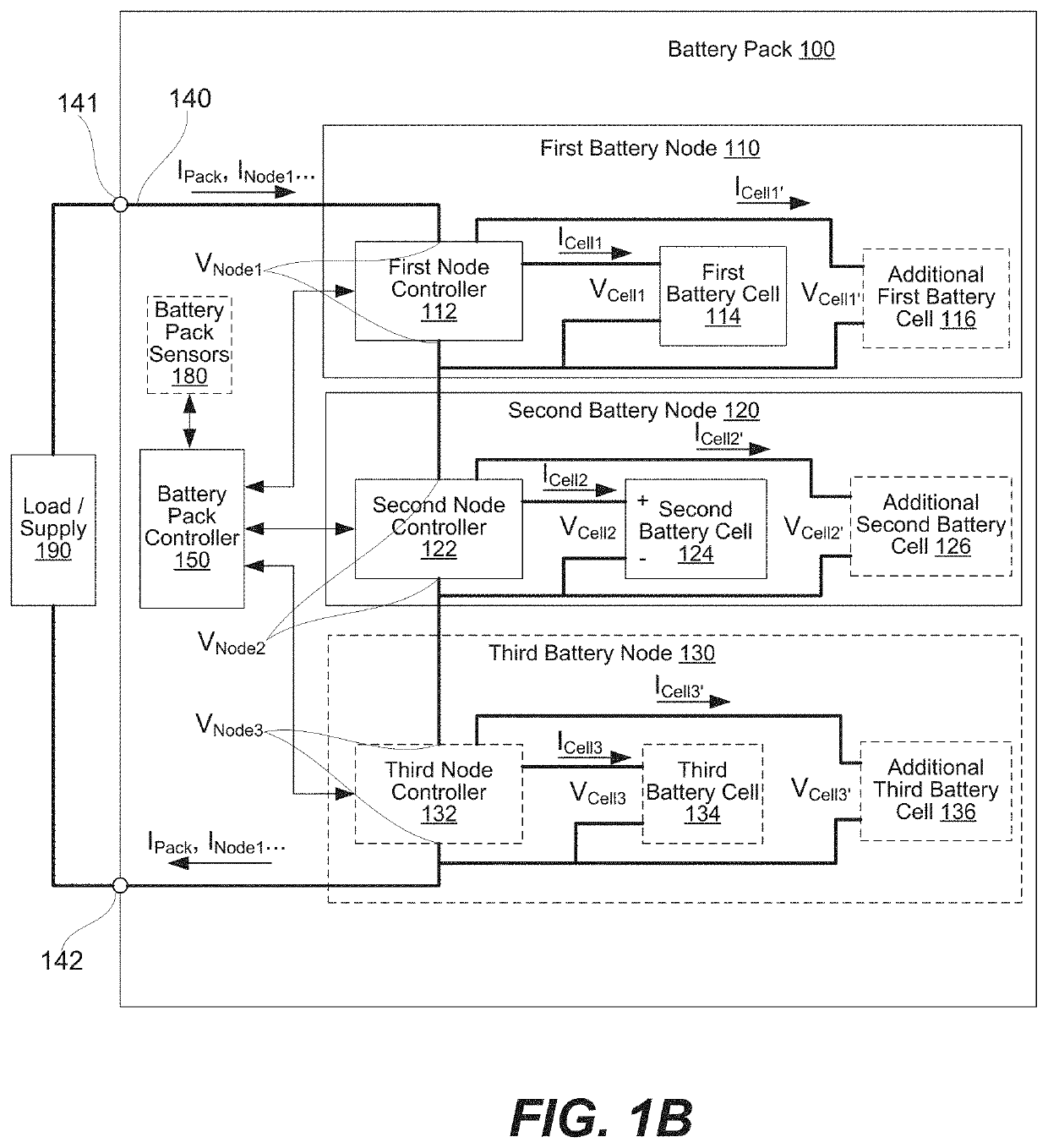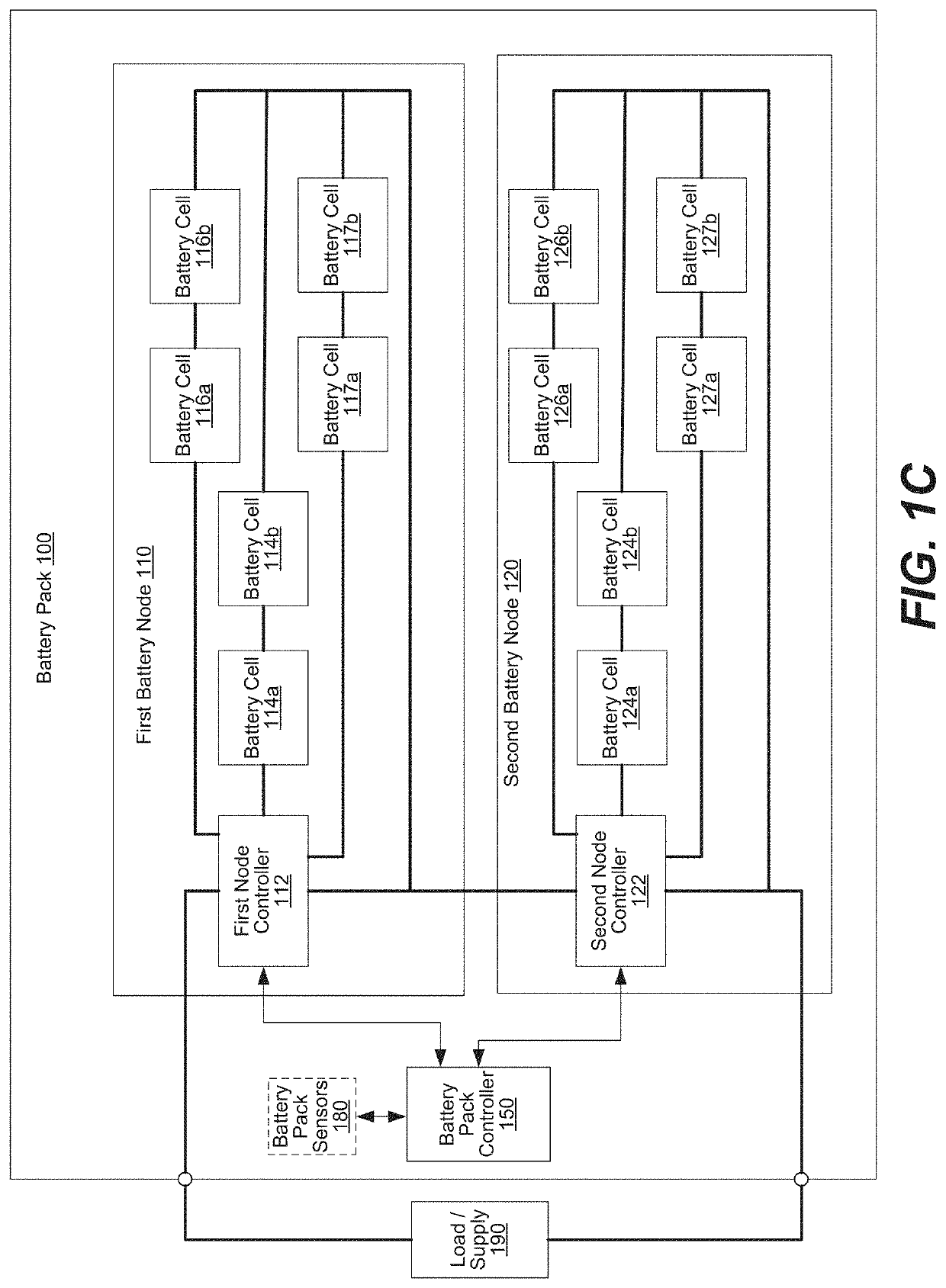Methods and systems for in-situ impedance spectroscopy analysis of battery cells in multi-cell battery packs
- Summary
- Abstract
- Description
- Claims
- Application Information
AI Technical Summary
Benefits of technology
Problems solved by technology
Method used
Image
Examples
Embodiment Construction
[0021]In the following description, numerous specific details are set forth in order to provide a thorough understanding of the presented concepts. In some examples, the presented concepts are practiced without some or all of these specific details. In other instances, well-known process operations have not been described in detail to not unnecessarily obscure the described concepts. While some concepts will be described in conjunction with the specific examples, it will be understood that these examples are not intended to be limiting.
INTRODUCTION
[0022]Cell impedance provides important information about the current state of the battery cell. For example, cell impedance may be used to determine cells' SOC, SOP, SOH, and SOS. In some examples, cell impedance may be used to improve operating characteristics of the cell (e.g., cutoff voltages, charge / discharge current) to maximize the overall cell performance (e.g., operating capacity, cycle life, and others). Impedance is a combinatio...
PUM
 Login to view more
Login to view more Abstract
Description
Claims
Application Information
 Login to view more
Login to view more - R&D Engineer
- R&D Manager
- IP Professional
- Industry Leading Data Capabilities
- Powerful AI technology
- Patent DNA Extraction
Browse by: Latest US Patents, China's latest patents, Technical Efficacy Thesaurus, Application Domain, Technology Topic.
© 2024 PatSnap. All rights reserved.Legal|Privacy policy|Modern Slavery Act Transparency Statement|Sitemap



